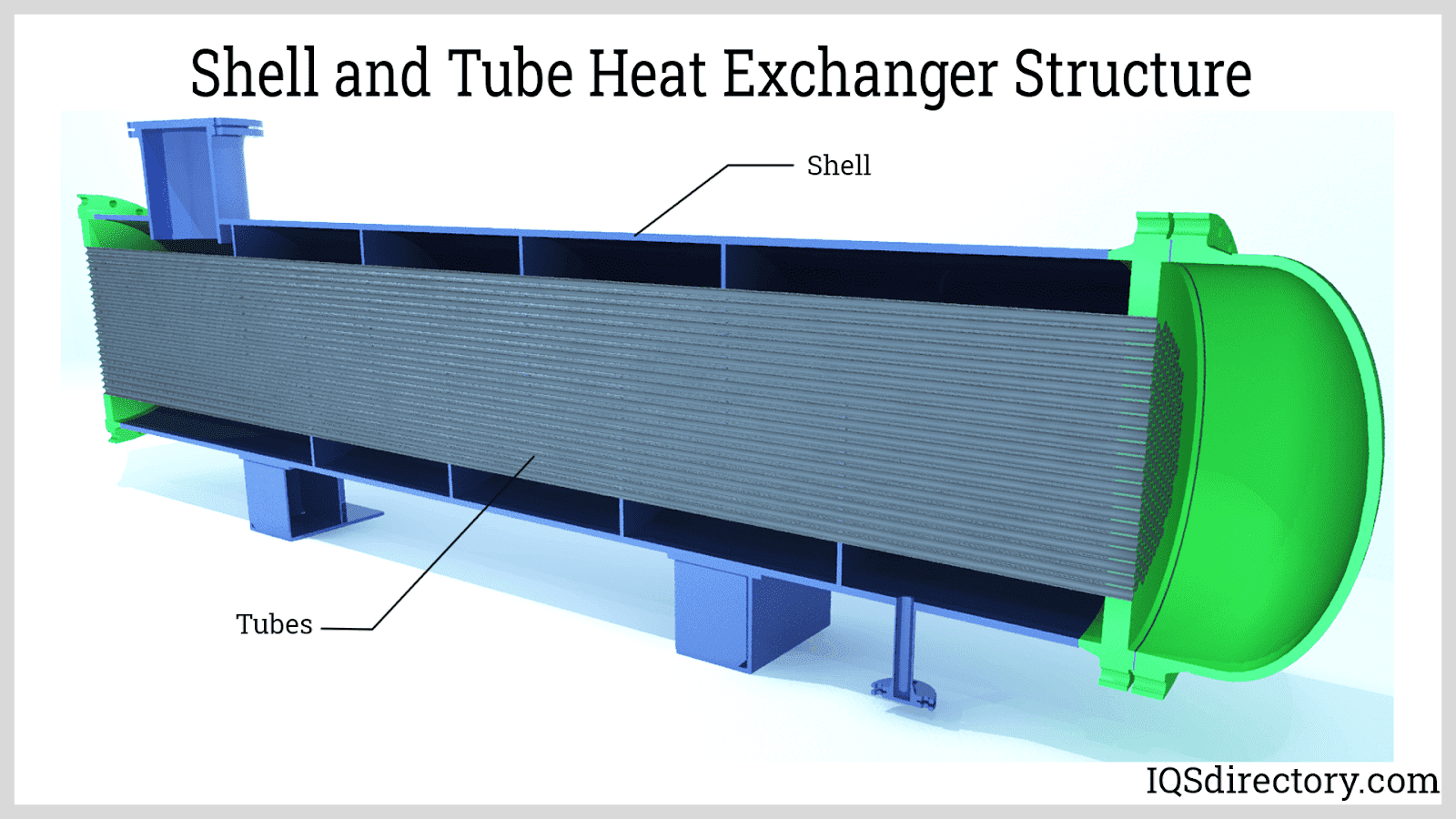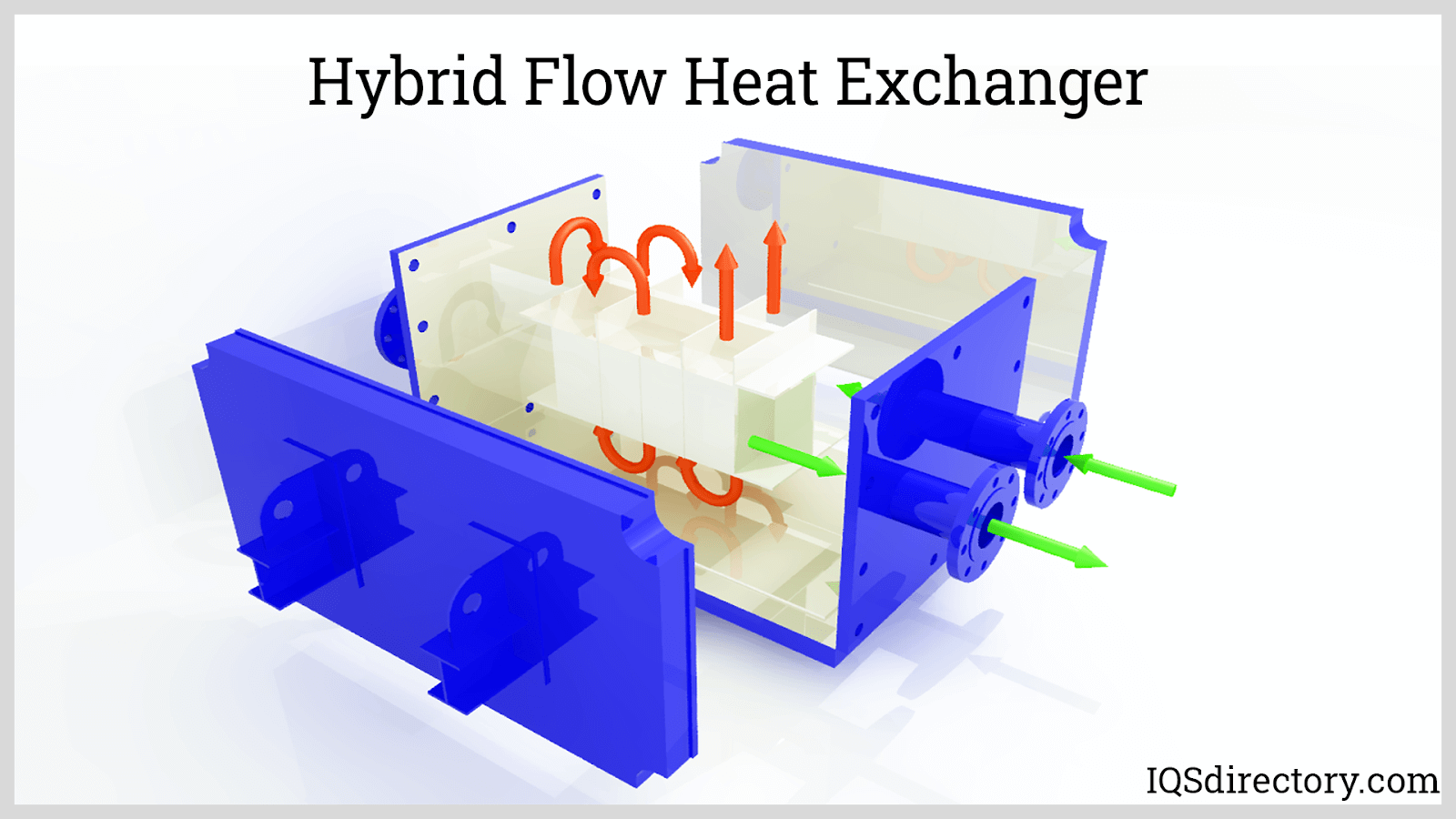Exploring Advanced CFD Modeling in DVS Heat Transfer Systems
Technologies in Heat Transfer Equipments: What You Required to Know for Optimum Performance
Innovations in Heat transfer systems are changing performance throughout numerous industries. Advanced products like graphene and nanofluids assure significant enhancements in thermal conductivity. At the same time, the combination of IoT and artificial intelligence supplies opportunities for real-time surveillance and improved power performance. The landscape of thermal administration is rapidly developing. Comprehending these developments is essential for attaining perfect system efficiency and sustainability in the future. What certain improvements are shaping this makeover?
Emerging Products for Enhanced Heat Transfer

Advanced Heat Exchanger Styles
While typical Heat exchangers have actually served their purpose in different applications, progressed layouts are currently emerging to satisfy the increasing needs for effectiveness and performance. These ingenious styles, such as plate, shell-and-tube, and finned-tube Heat exchangers, integrate enhanced area and enhanced flow patterns to increase thermal transfer prices. Furthermore, portable designs allow for decreased space requirements without endangering effectiveness. Advanced products, such as compounds and corrosion-resistant alloys, in addition enhance toughness and performance under severe problems. In addition, simulation modern technologies and computational liquid dynamics are significantly employed to refine these layouts, making certain peak Heat transfer characteristics. As markets look for to decrease energy usage and make best use of result, the adoption of innovative Heat exchanger layouts is essential in achieving these purposes.
The Function of Nanotechnology in Heat Transfer
Nanotechnology plays a necessary role in improving thermal conductivity within Heat transfer systems. By manipulating materials at the nanoscale, scientists have actually attained significant enhancements in energy effectiveness. These innovations not just optimize efficiency but likewise add to more lasting power solutions.
Improved Thermal Conductivity
Considerable improvements in thermal conductivity have emerged through the application of nanotechnology, transforming Heat transfer systems throughout different markets. By integrating nanoparticles into Heat transfer liquids and products, researchers have accomplished exceptional increases in thermal conductivity. These nanoparticles, such as carbon nanotubes, graphene, and metal oxides, boost the Heat transfer residential properties because of their high surface and one-of-a-kind thermal characteristics. The resulting composites display enhanced efficiency in applications ranging from electronics cooling systems to renewable resource modern technologies. The capacity to tailor the dimension, form, and make-up of nanoparticles allows for optimized thermal management solutions. As an outcome, nanotechnology remains to play an essential role in the advancement of a lot more effective and reliable Heat transfer systems, leading the way for boosted industrial applications.
Energy Performance Improvements

Combination of IoT in Heat Transfer Systems
The integration of IoT in Heat transfer systems introduces the implementation of wise sensors that improve operational performance. These sensing units make it possible for real-time information surveillance, allowing for prompt changes and optimizations. This technological advancement has the possible to significantly our website boost performance and power management in Heat transfer applications.
Smart Sensors Application
As Heat transfer systems develop, the assimilation of wise sensors with the Internet of Things (IoT) has actually emerged as a transformative strategy. These sensing units make it possible for real-time tracking of temperature, pressure, and flow rates, enhancing system performance and dependability. By collecting and transmitting information, they facilitate proactive maintenance, lowering the risk of system failings. Additionally, smart sensors add to energy savings by refining operational specifications based on ecological problems. Their ability to assess anomalies and fads enables for educated decision-making, ensuring peak performance of Heat transfer systems. As sectors increasingly embrace this modern technology, the application of clever sensing units stands to revolutionize just how Heat transfer systems are managed, paving the method for greater sustainability and improved efficiency end results.
Real-Time Data Tracking
Just how can real-time information monitoring improve the performance of Heat the original source transfer systems? By incorporating Web of Points (IoT) technology, Heat transfer systems can leverage continual data collection from clever sensors. This real-time tracking permits for instant analysis of stress, circulation, and temperature level rates, enabling operators to determine inefficiencies immediately. Adjustments can be made to maximize performance, decrease energy consumption, and prolong devices life expectancy. Additionally, predictive upkeep can be executed, minimizing unexpected downtime and costly repairs. The capability to picture efficiency metrics with dashboards improves decision-making, cultivating a positive approach to system monitoring. Eventually, real-time information monitoring not just improves operational effectiveness yet additionally adds to sustainability objectives within commercial procedures.
Power Performance and Sustainability Trends
Power effectiveness and sustainability patterns are reshaping the landscape of Heat transfer systems, driving advancement and conformity throughout different industries. Organizations are progressively prioritizing energy-efficient layouts to reduce functional expenses and decrease environmental influences. The integration of eco-friendly power sources is becoming more prevalent, enabling Heat transfer systems to operate sustainably while satisfying regulative demands. In addition, innovations in modern technologies and products advertise reduced power usage and enhance overall efficiency. Lifecycle assessments are likewise acquiring grip, permitting companies to assess the environmental influence of Heat transfer systems from manufacturing to disposal. This focus on sustainability not only supports corporate duty yet likewise placements companies competitively in a market where customers increasingly favor green services. Consequently, power efficiency and sustainability remain critical factors to consider for future advancements in Heat transfer modern technology.
Innovations in Thermal Monitoring Solutions
While the demand for efficient Heat transfer proceeds to rise, developments in thermal administration remedies are arising to deal with both efficiency and sustainability obstacles. Advanced materials, such as phase modification materials and nanofluids, are being created to enhance Heat transfer efficiency - DVS Heat Transfer Systems. These products enhance thermal conductivity and enable much better temperature level policy in different applications. Additionally, technologies like energetic thermal control systems are acquiring grip, enabling real-time adjustments to handle Heat circulation successfully. These systems add to energy financial savings and decrease the ecological influence of thermal processes. The integration of IoT in thermal administration facilitates surveillance and anticipating upkeep, guaranteeing enhanced performance and long life of Heat transfer systems. On the whole, these advancements represent considerable strides toward even more lasting thermal administration techniques
Future Instructions in Heat Transfer Modern Technology
Arising developments in thermal administration options indicate a promising future for Heat transfer technology. Scientists are significantly concentrating on establishing materials with remarkable thermal conductivity and boosted energy performance. Innovations such as nanofluids, which include put on hold nanoparticles, offer substantial enhancements in Heat transfer efficiency. Furthermore, the integration of smart materials that adapt to advice varying temperature level problems is gaining traction, permitting more responsive and reliable systems. The surge of additive production techniques is likewise making it possible for the layout of intricate Heat exchanger geometries that optimize fluid flow. Furthermore, the application of equipment discovering formulas is expected to change the optimization of Heat transfer systems, facilitating predictive maintenance and performance enhancement. Collectively, these advancements are poised to transform the landscape of Heat transfer modern technologies in various industries.

Often Asked Concerns

Exactly how Do I Select the Right Heat Transfer System for My Application?
Picking the appropriate Heat transfer system involves examining application requirements, consisting of temperature level arrays, liquid homes, and effectiveness needs. Evaluating system types, upkeep factors to consider, and cost-effectiveness also plays a vital role in making an informed decision.
What Are the Maintenance Requirements for Advanced Heat Exchangers?
Maintenance requirements for sophisticated Heat exchangers typically consist of regular evaluations, checking for leakages, cleansing of surface areas, and ensuring optimal circulation prices. Adhering to producer guidelines guarantees efficient procedure and extends the devices's life-span.
Just How Do Ecological Aspects Affect Heat Transfer Efficiency?
Ecological variables substantially affect Heat transfer effectiveness. Variations in moisture, air flow, and temperature effect thermal conductivity and convective Heat transfer, eventually affecting system performance and demanding consideration during the style and operation of Heat transfer systems.
What Safety And Security Standards Apply to Heat Transfer Systems?
Safety and security standards for Heat transfer systems commonly include standards from companies such as ASME and ASTM. DVS Heat Transfer Systems. These criteria address products, design, and functional techniques to guarantee dependability, efficiency, and security versus threats in numerous applications
How Can I Repair Common Heat Transfer System Issues?
Fixing common Heat transfer system issues includes looking for leaks, ensuring appropriate liquid circulation, inspecting insulation integrity, and confirming temperature level differentials. Determining these aspects can aid preserve system effectiveness and avoid additional issues.
Nanotechnology plays an important function in boosting thermal conductivity within Heat transfer systems. Significant improvements in thermal conductivity have actually arised with the application of nanotechnology, revolutionizing Heat transfer systems across various markets. Developments in thermal conductivity via nanotechnology have actually paved the method for amazing improvements in energy efficiency within Heat transfer systems. Energy performance and sustainability fads are reshaping the landscape of Heat transfer systems, driving advancement and compliance throughout numerous sectors. The combination of IoT in thermal monitoring helps with surveillance and anticipating upkeep, making sure enhanced efficiency and long life of Heat transfer systems.